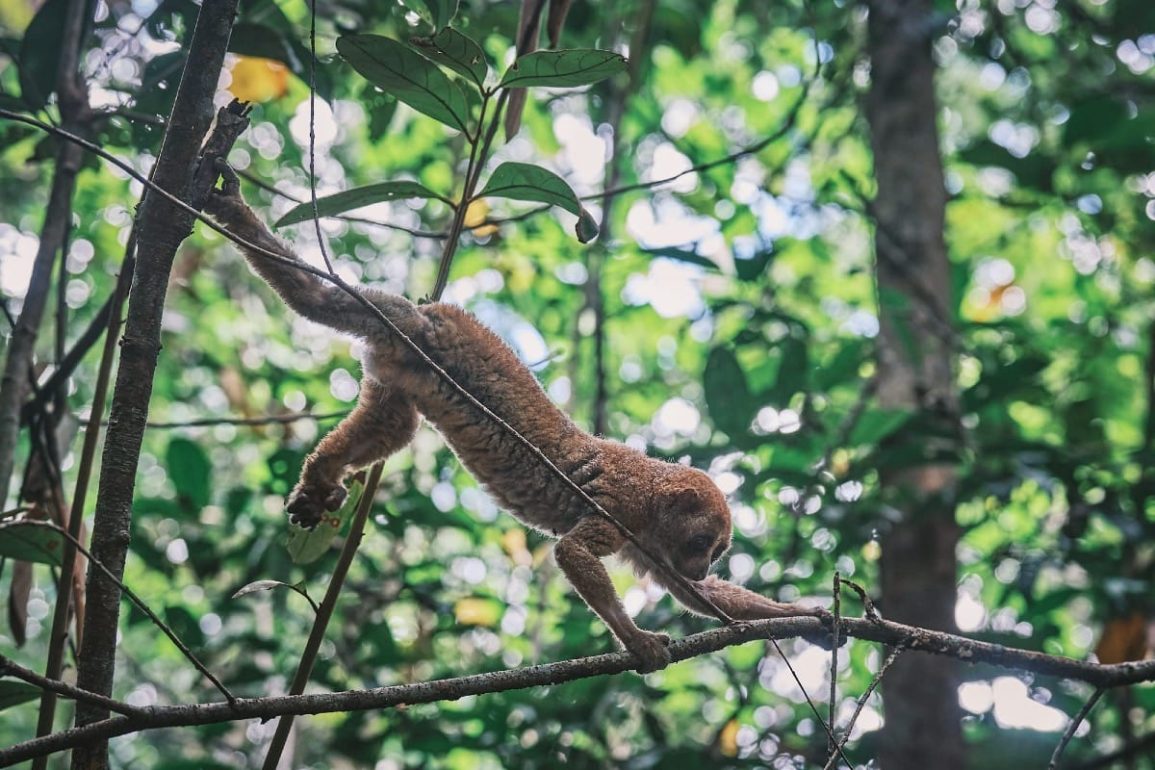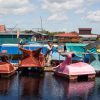Forests are not only about flora and fauna, but also about humans and about giving meaning to the invisible. Tahawa animal friendly village is a concept of sharing space in one ecological niche. The target is to bring the relations between humans and wild animal become closer, yet tightly. Live each way naturally until there would be no conflict.
On Sunday morning (18/02/2024), the Bundaran Besar Palangkaraya was busy. People exercise, relax, vacation. About 100m from that holiday atmosphere, Sadtata Noor Adirahmanta, Head of the Central Kalimantan BKSDA (Natural Resources Conservation Agency) opened the door to his office. He coordinated with several staff.
“The problem (of conservation) does not recognize holidays,” he told Hutan Hijau team. That day, Hutan Hijau Expedition Team 1.0 was invited to release slow loris.
While the team was still preparing, a fire truck from the Rapid Response Team entered the office. Four officers took out an iron cage containing a long-tailed monkey (Macacca fascicularis). Conservation problems do not recognize holidays.
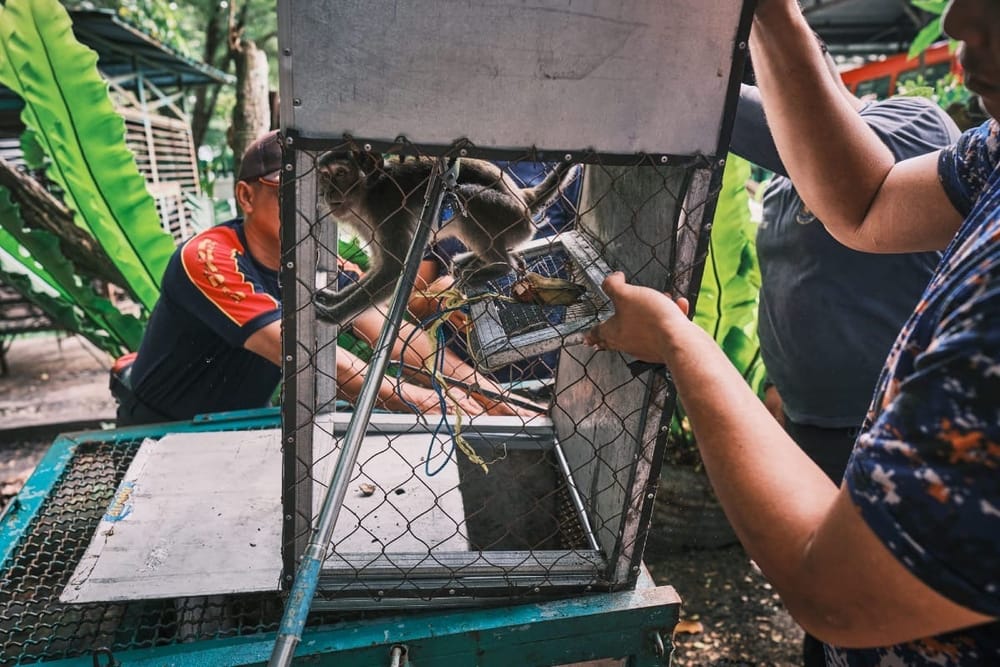
“This (monkey) entered the residential area and is disturbing,” said Sucipta, the Rapid Response Team, reporting to Sadtata. If residents are anxious, the monkey is threatened with harm. After being recorded, the monkey will be released along with the slow loris.
The Central Kalimantan BKSDA office seems to be the address for wild animals that have gone to the wrong address. Monkeys entering settlements, sun bears on the black market, bored sloths kept by (supposedly) animal lovers, orangutans, pangolins, and so on.
“If you end up getting bored and having a hard time, why do you have to look after wild animals in the first place? Let them live freely in their habitat,” advised Sadtata. Doesn’t loving animals mean you have to own them? Doesn’t loving mean liberating, not confining you to a cage?
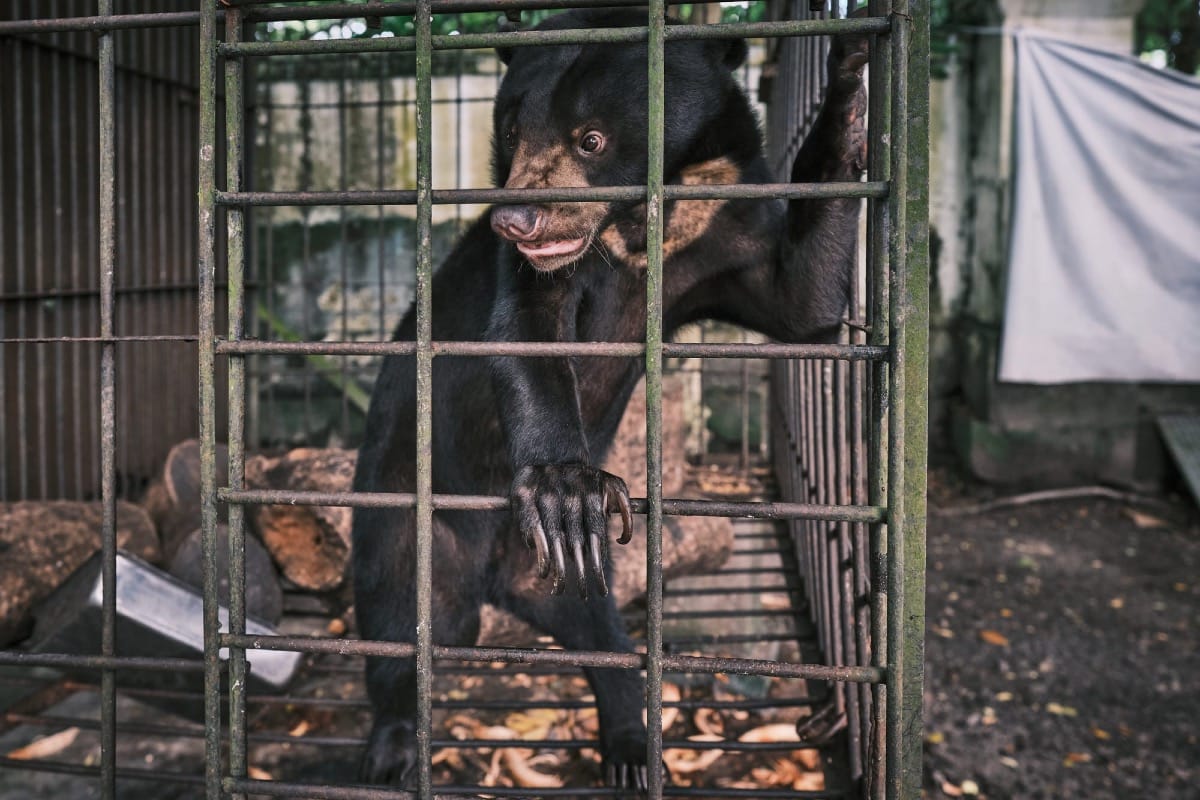
Wild animals are different from pets which can be owned and lived at home. Wild animals have a home range (roaming area) and roaming capacity that cannot be achieved just in a cage. For example, the slow loris handed over by the residents still has its wild nature. The home of wildlife is the forest. If handed over to BKSDA, this place is only a transit place. The final goal is still to return to the forest. This time, the new house is Tahawa Animal Friendly Village, Kahayan Tengah District, Pulang Pisau Regency.
Friendly Relations between Humans and Animals
The convoy of cars headed at high speed towards Tahawa. At the front, a double cabin car led by Sadtata and an iron cage containing a monkey was in the back which was covered with leaves. Meanwhile the slow lorises were placed in the air-conditioned cabin of the other car. The journey, which often hits holes and curves, lasts 1.5 hours, around 98km from the center of Palangka Raya City. High speed is needed so that animals don’t get stressed from being on the road for too long.
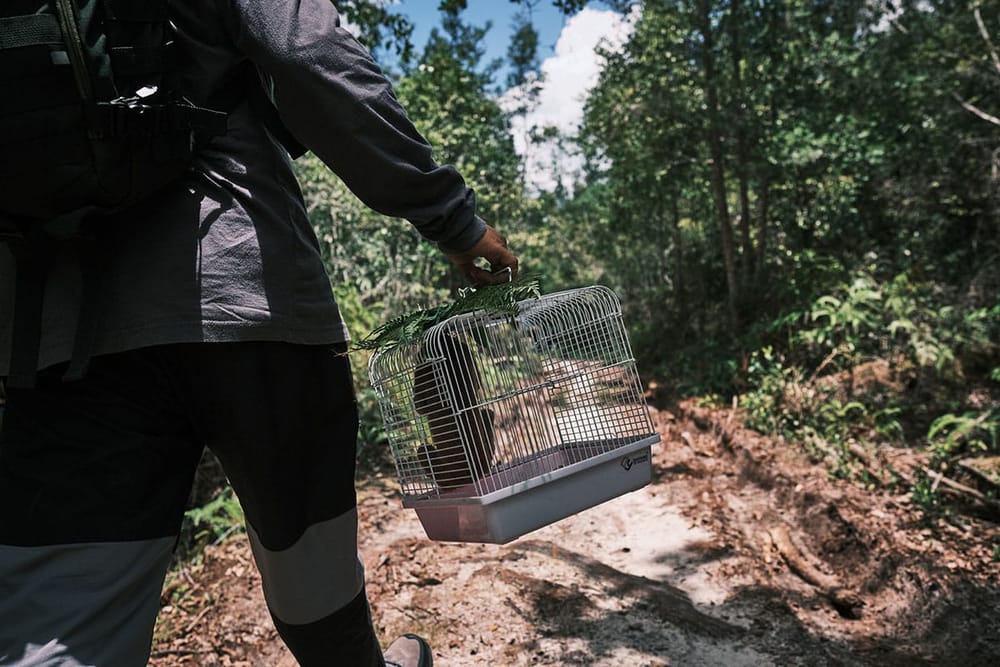
Arriving at the location, the officers immediately took the two cages into the forest via a 3km trekking route. Arriving at a comfortable place for the animals, the cage door is opened. Monkey immediately jumped and disappeared. Meanwhile, the slow loris takes time to crawl out, slowly and eventually blends into the dense forest.
Even though it is called a village, the release location is not in a settlement but in a village forest covering an area of 998 ha. The forest area managed by the Tahawa LPHD (Village Forest Management Institute) received a management permit under the Social Forestry scheme in 2020. Meanwhile, the residential area is located 3km from the village forest.
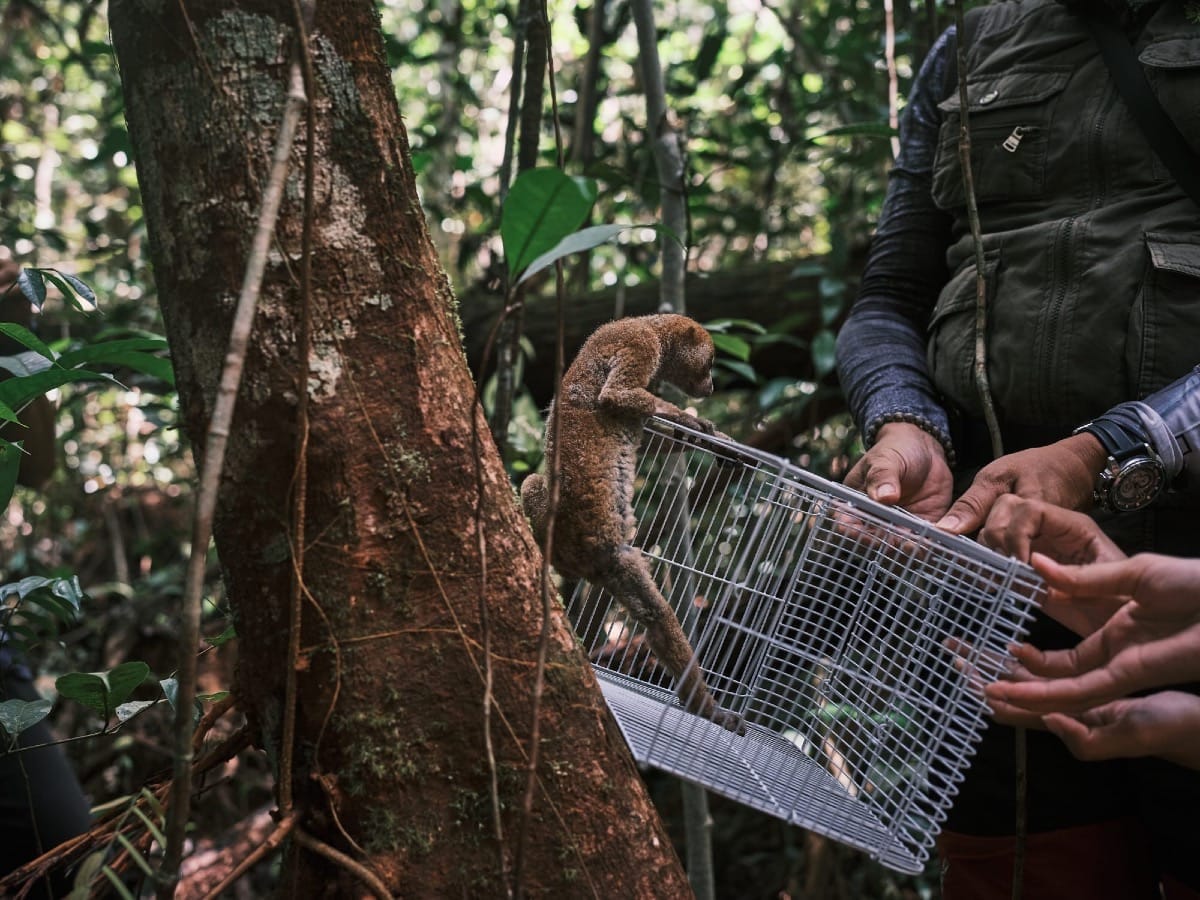
“In the future, we have to build a community mindset, that one day the time will come when we have to be ready to live side by side with (wild) animals,” said Sadtata.
The concept of animal-friendly village initiated by Sadtata and the Central Kalimantan BKSDA team is to get people used to living side by side with wild animals in their natural habitat. For example, in the future people will be used to seeing orangutans nesting, snakes passing by, slow lorises looking for food and other wild animals. Even wild animals are no longer afraid of humans because humans are not a threat to their lives. Share ecological space (niche) without disturbing each other.
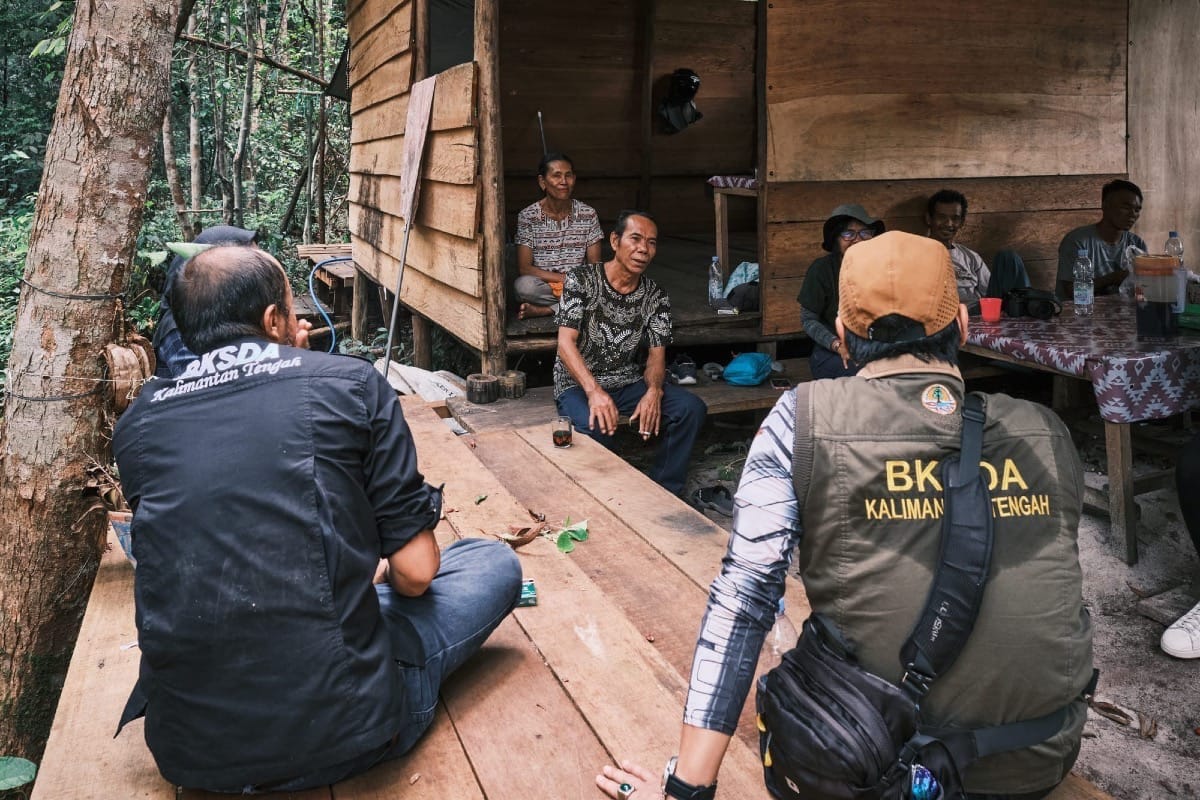
Animal-friendly villages are an eco-populism concept that takes a middle path between the needs of natural animal habitats and human existence, without sacrificing either one. The human population is increasing, requiring more spacious living space. The conversion of land causes wild animals to lose their homes. Animal-friendly villages bridge these two interests. In fact, in several places in Indonesia someone has already started it. For example, bird-friendly villages in Jatimulyo, Kulon Progo, Yogyakarta and gibbon-friendly villages in Petungkriyono in Pekalongan. However, this is the first time this village is animal friendly, in this case wildlife, in Tahawa.
The Tahawa Village Forest Area is administratively an area under the control of the Central Kalimantan Provincial Forestry Service. Management right is under LPHD Tahawa. Meanwhile, wild animals released are the responsibility of the Central Kalimantan BKSDA. The synergy of these 3 stakeholders makes the concept of an animal-friendly village a reality.
“The area of Central Kalimantan Province is around 15 million hectares. Well, the areas designated as conservation areas are no more than a third of the province’s area. We can imagine how inadequate it would be if all the wild animals in Central Kalimantan had to be collected in a conservation area,” explained Sadtata.
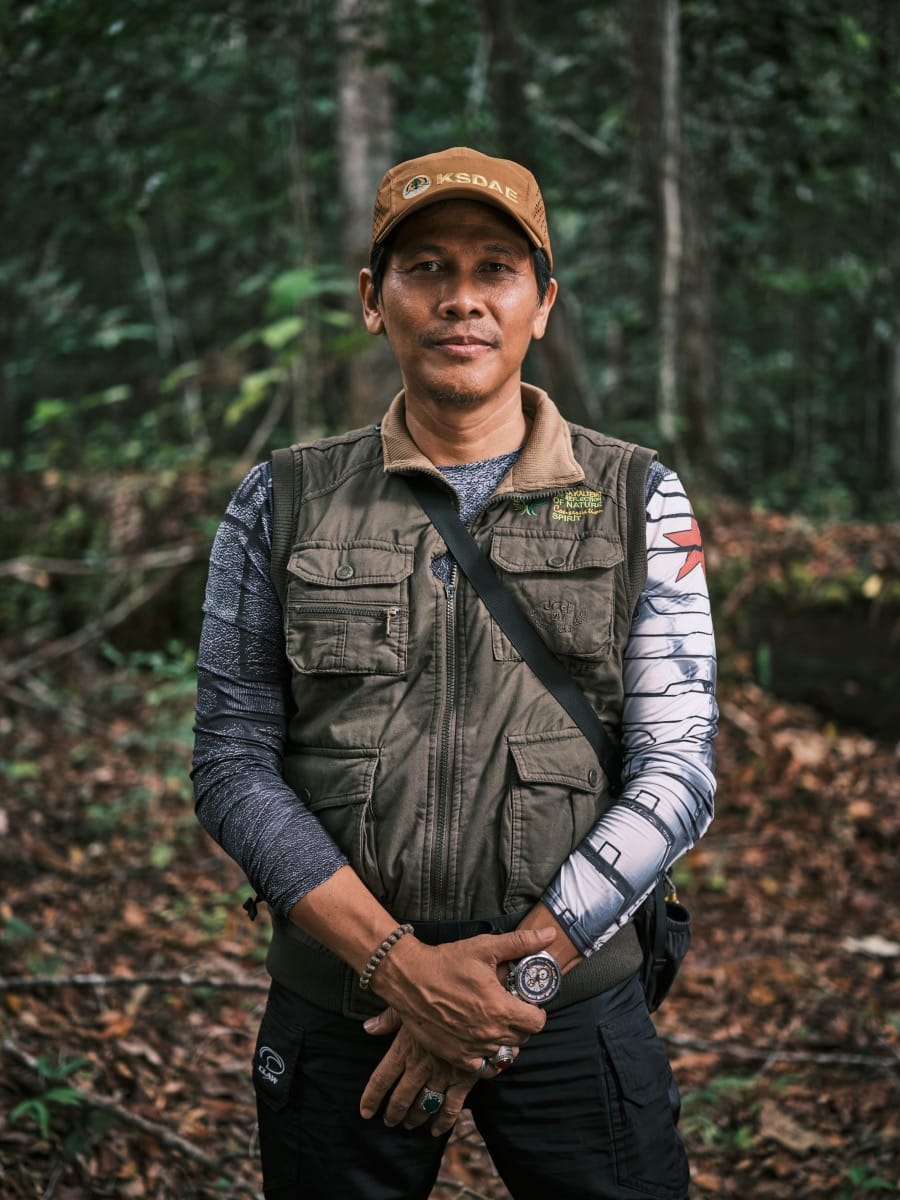
He said, so far when people encounter wild animals in residential areas, they are caught and then handed over to the BKSDA. Animals, that enter residential areas because their habitat has been replaced by human habitat and are not friendly for animals, are temporarily accommodated in the BKSDA and then released back into the wild.
Sadtata remembers several funny incidents of people’s enthusiasm for handing over wild animals to BKSDA. On the other hand, he expressed his appreciation for the alertness of the residents. The residents were so enthusiastic that they caught the crocodile at the mouth of the river and handed it over to the BKSDA.
“Isn’t it true that crocodiles live in estuaries? These are the things we need to educate about. My hope is that one day, there will be no more animals housed at BKSDA. This means we are successful,” he added.
That is, when there are no more cases of wild animals being captured and they can live in their natural habitat. In the future, the appearance of wild animals will no longer be considered as a conflict but will become a normal event because no one feels disturbed.
The Legend of the Love of an Inconvenient Woman
“Socialization of the concept of animal-friendly villages in village forests is currently going very smoothly,” said Sadtata.
Initially, the BKSDA team communicated with LPHD and the community about the idea of an animal-friendly village. Apparently this idea was welcomed by the people of Tahawa Village who already had similar thoughts.
“The people of Tahawa are used to seeing animals, they have no problem seeing animals, so when Mr. Tata had the idea of establishing an animal-friendly village, we agreed,” said Tugas B. Sia, Chair of the Tahawa LPHD.
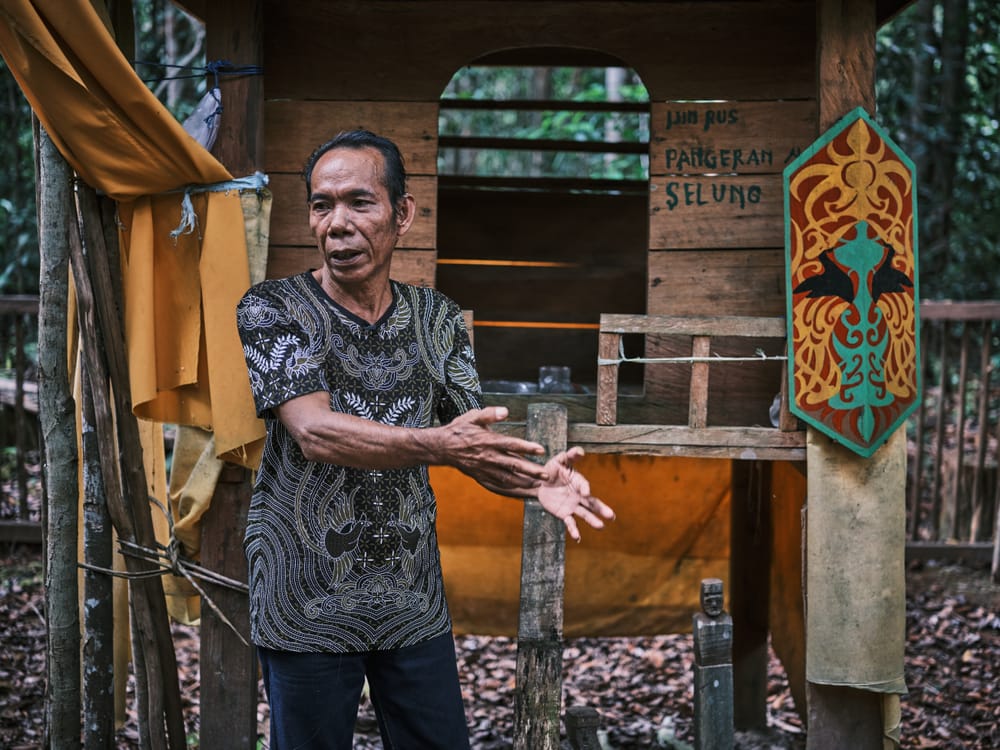
Encounters with wild animals are a daily occurrence for Tahawa Village residents. For example, a bear stops on the terrace, eats jackfruit that is lying around after being harvested, the residents leave it alone until the bear leaves again. The Dayak people’s closeness to animals and forests is a narrative of their ancestors. It was the forest that gave birth to the Dayak civilization. Civilization that is not only about human stories, but also the stories of trees, animals and invisible inhabitants.
“This is a tribute to the natural environment and our surroundings. So we don’t just protect forests and animals. But (also looking after) what is in this environment we have to look after together so that our hearts don’t disturb each other. That is the purpose of karamat,” explained Tugas while showing a sacred complex.
A small house on stilts decorated with typical Dayak carvings with an altar made of wooden planks. On the front, there is imprecise handwriting but spelled out with a heart: Ijin Ruh, Pangeran Nata, Selong. This simple handwriting is a universal link between Tugas and all Tahawa residents and their ancestors long before the number of years.
A love story that is no longer a matter of appearance when a handsome prince falls in love with an old woman and marries her in the Tahawa Forest.
“Ninik Selong is a “tambi balu” or widowed grandmother. Prince Nata is a handsome prince, our grandmother is already old and dented. “They got married in the supernatural world,” said Tugas narrating an event as if that just happened yesterday.
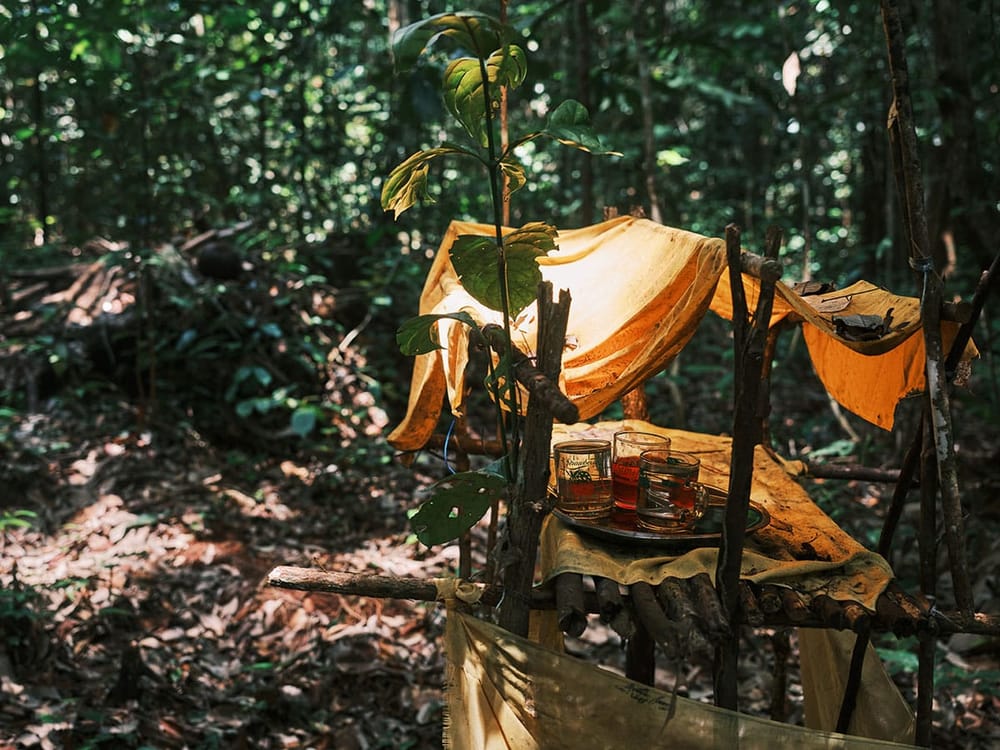
According to Tugas, Ninik Selong, a healer who was able to cure various diseases, was elderly. It is estimated that she is approaching 100 years old and will no longer be able to walk far. Most of the day is spent in bed. One day, Ninik Selong disappeared. The village was in uproar. Residents searched in all directions, but were not found.
Until 3 days later, Ninik Selong was on the terrace in good health. Ninik Selong told her children, if suddenly she wasn’t there, there was no need to look for her. She is meeting her lover, Prince Nata. This happened several times until finally Ninik Selong never returned after Prince Nata appeared to pick up his bride.
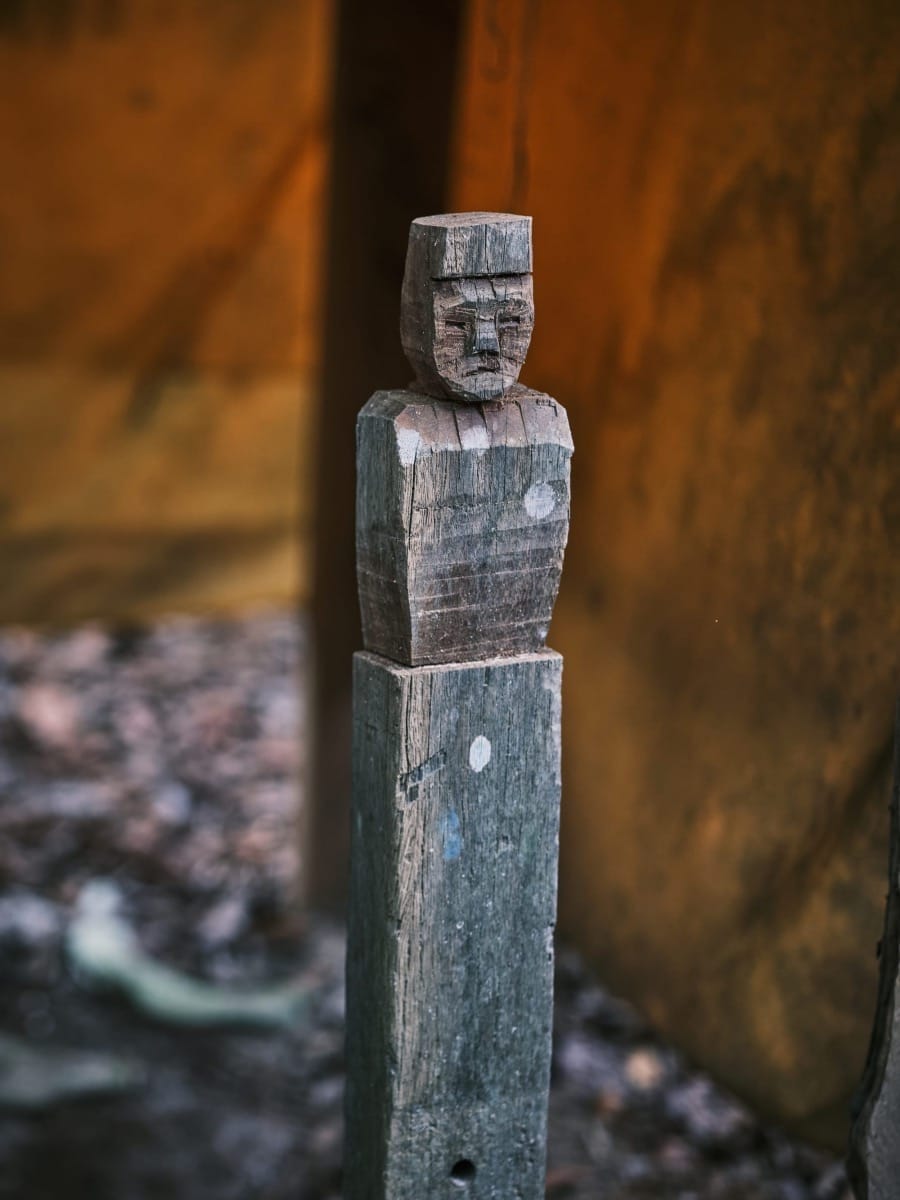
“Prince Nata from Hulu Sahai, came down and appeared. He married Ninik Selong, not in real life, making her his wife,” explained Tugas. After getting married, Ninik Selong never came back. According to the beliefs of the Tahawa people’s ancestors, Ninik Selong and Prince Nata had settled in Hulu Sahai.
“Here, we built this karamat with our own funds,” added Tugas.
A piece of land that is sacred to the Dayak tribe has magical powers for him. When he invited Hutan Hijau Team to come closer, his whole body had goosebumps. There is a connection that not everyone can understand. Including the story of the 3rd name besides Ninik Selong and Prince Nata written on the shrine, Ijin Ruh.
“This is our “Datuk”. During the colonial era, he died. As soon as the children and grandchildren wanted to remove the bones, they received a message that there was no need to dig them up, because he (Datuk) was no longer in the grave,” said Tugas, lowering his voice. He continued, when the Datuk’s grave was dug up, there were not any bones. The chest is empty. He became a genie who lived in the sacred place.
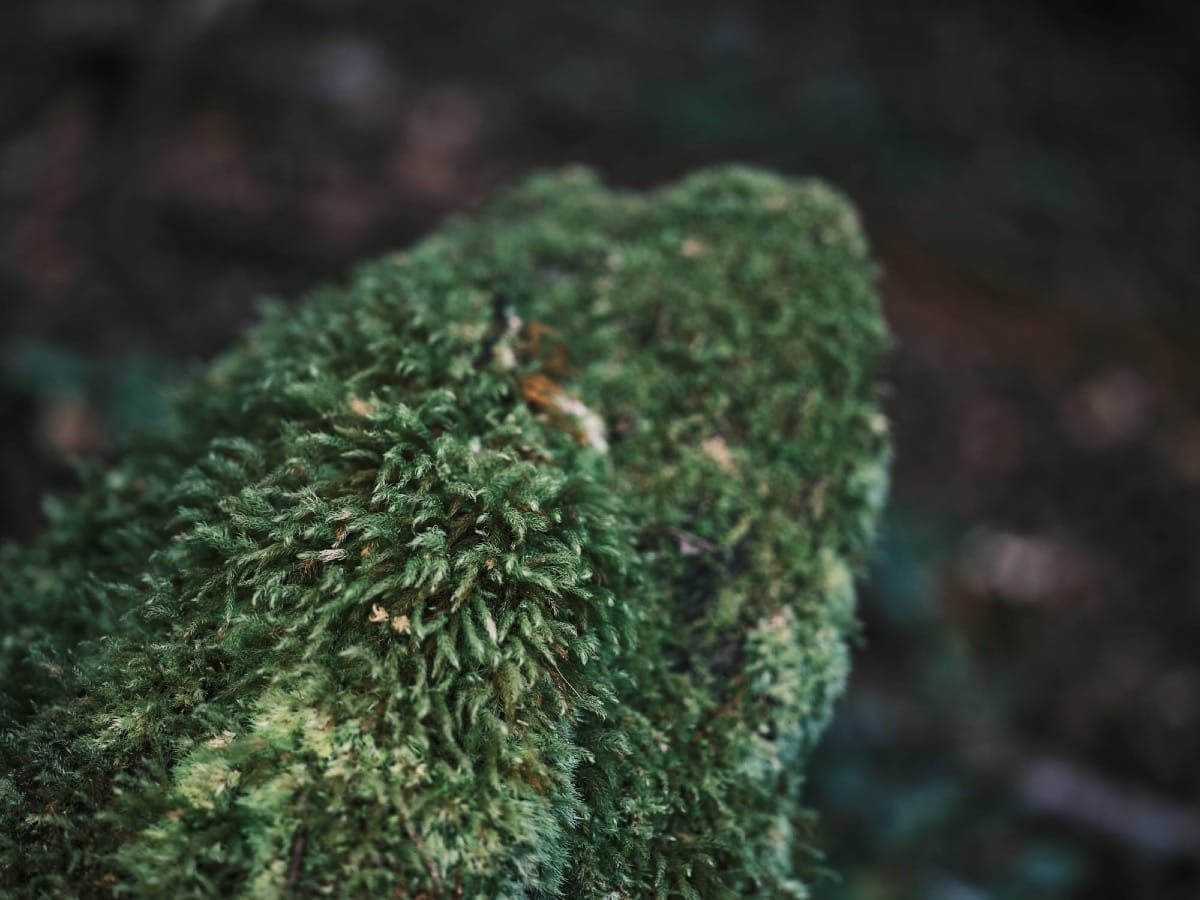
Another magical event was the personal experience of Tugas. When the Provincial Tourism Office of Central Kalimantan visited the Tahawa Forest for a survey, suddenly the forest was covered by thick clouds and strong winds. In his interpretation, the ancestors did not want their forest areas to be disturbed.
“I then took the leaves and said that we, Datuk’s children and grandchildren, intend to protect the forest so that it can provide more benefits. Not long after, the clouds disappeared,” he said.
This connection between hope and legend is able to give the Tahawa people the spirit to protect the sovereignty of the Tahawa Forest. The forest is home to sailors, monkeys, gibbons, jungle cats, slow lorises, bears, orangutans and others. There are also various birds endemic to Kalimantan, for example tete mayat, luntur putri, helmeted hornbill, cengkareng, etc.
Forests have been the economic pulse of the Dayak community from NTFPs (Non-Timber Forest Products) from ancestral times until now. People take rattan, wood sap, fruit and also rely on the strength of their ancestors who will protect the forest and life.
Editor’s note:
Five days after the interview for the article above, when the Hutan Hijau team was still continuing the Central Kalimantan Expedition (16-26 February 2024), Sadtata Noor Adirahmanta was appointed Head of the Betung Kerihun and Lake Sentarum National Park Center, West Kalimantan (23/02/2024) . Hutan Hijau editorial team congratulates him on his promotion to this position. Hopefully there will be more innovations for conservation.
This article was translated by Dewi Pascarani

